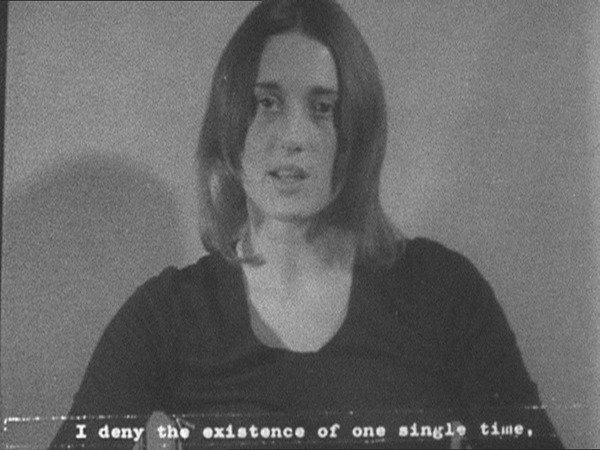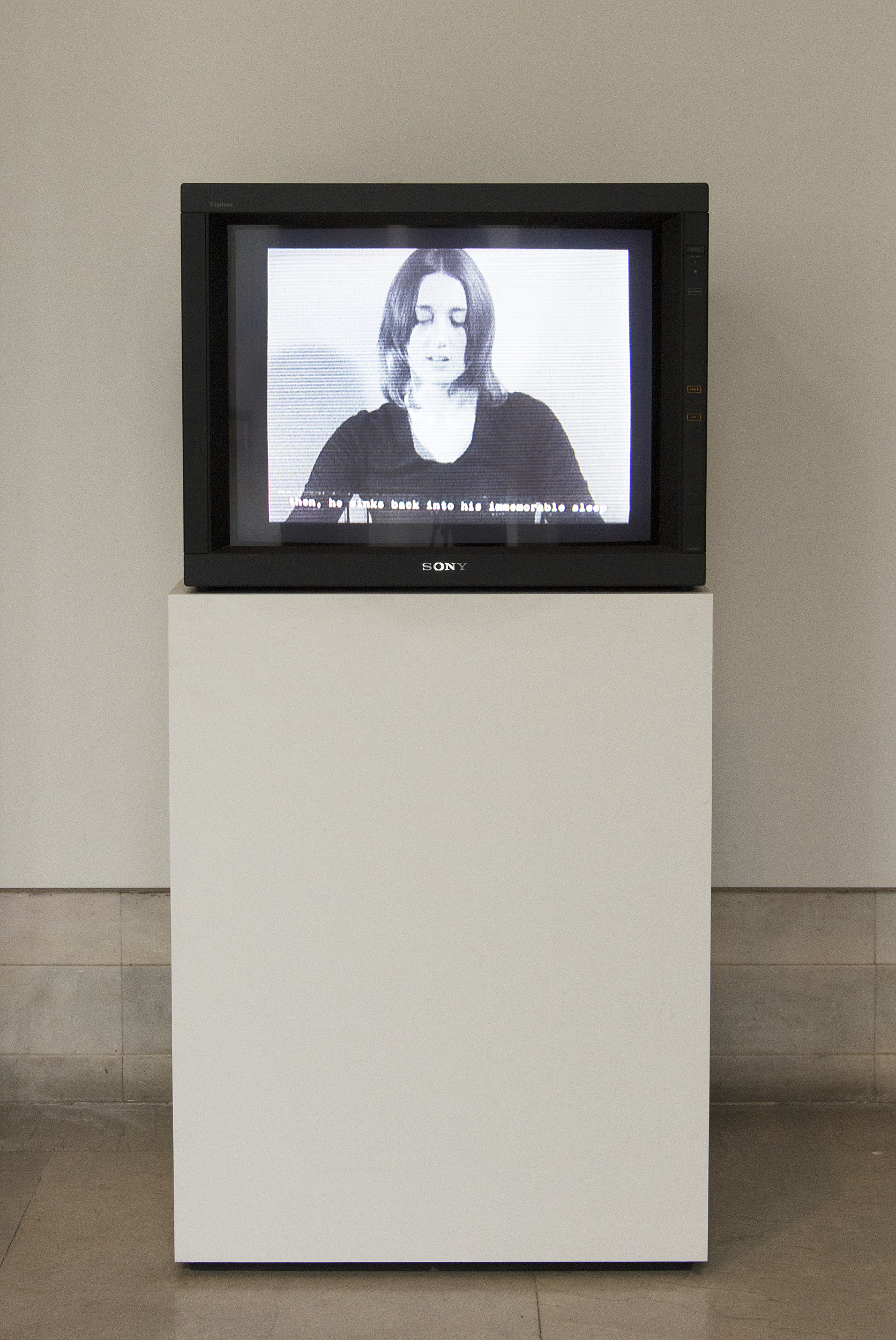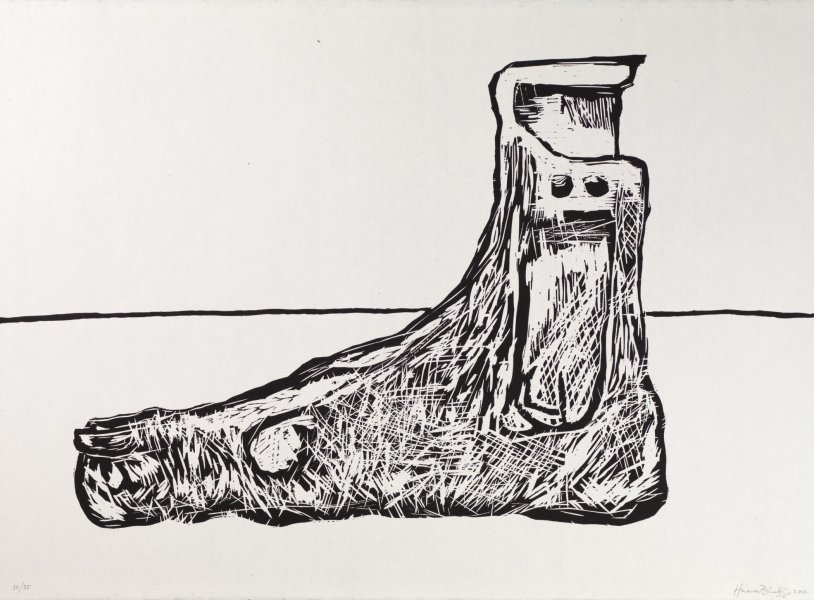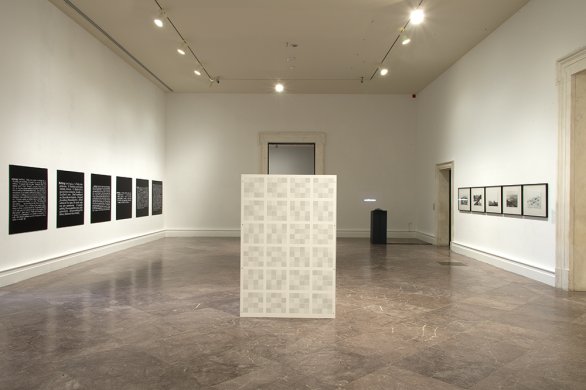David Lamelas
Argentinian, active in New York City, born 1946
Reading of an Extract from "Labyrinths" by J. L. Borges, 1970
Artwork Details
Materials
16mm film, black and white, silent
Edition:
edition of 50
Measurements
running time: 5 minutes
Collection Buffalo AKG Art Museum
Credit
The Panza Collection and by exchange: George B. and Jenny R. Mathews Fund, Bequest of Arthur B. Michael, Albert H. Tracy Fund and Bequest of John Mortimer Schiff, 2015
Accession ID
2015:14.19
To make this film, David Lamelas recorded an actress reading aloud from “A New Refutation of Time,” an essay by Argentine author Jorge Luis Borges that was published in his acclaimed short-story and essay collection Labyrinths. The film is silent, however, and Borges’s words are only accessible through a series of subtitles. In “A New Refutation of Time,” Borges contests the idea that there is a singular experience of time “in which all things are linked as a chain.” He argues that if individuals living at different points in time can have identical experiences, then time, as we know it, does not exist. In Reading of an Extract, Lamelas not only re-presents Borges’s idea but also enacts it. Because the work is silent, the viewer is compelled to duplicate the act of reading performed by the film’s actress. Yet these essentially identical experiences occur at what would typically be conceived as two distinctly different points in time: one in 1970 when the film was made and the other in the present moment while watching the film. Lamelas uses Borges’s idea to reflect on the nature of film itself, a medium that can bridge past and present experiences and can also challenge traditional conceptions of linear time.
Label from Looking at Tomorrow: Light and Language from The Panza Collection, 1967–1990, October 24, 2015–February 7, 2016



